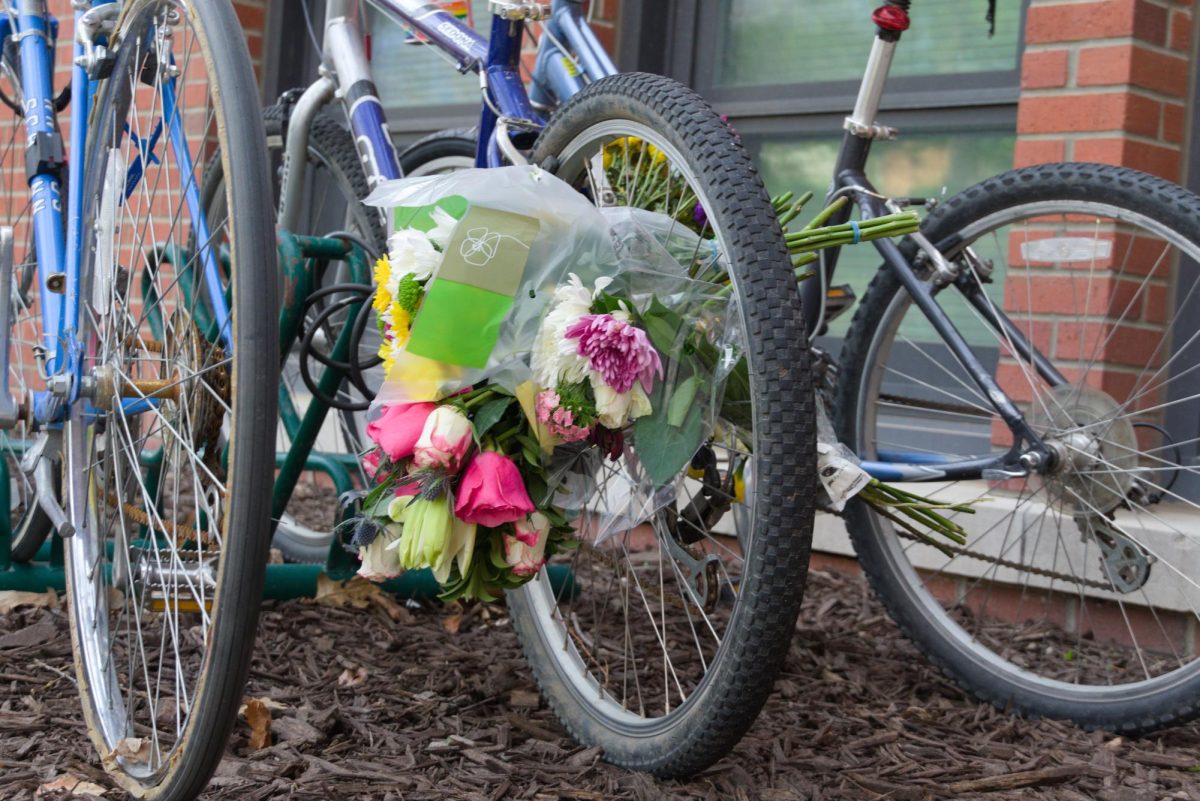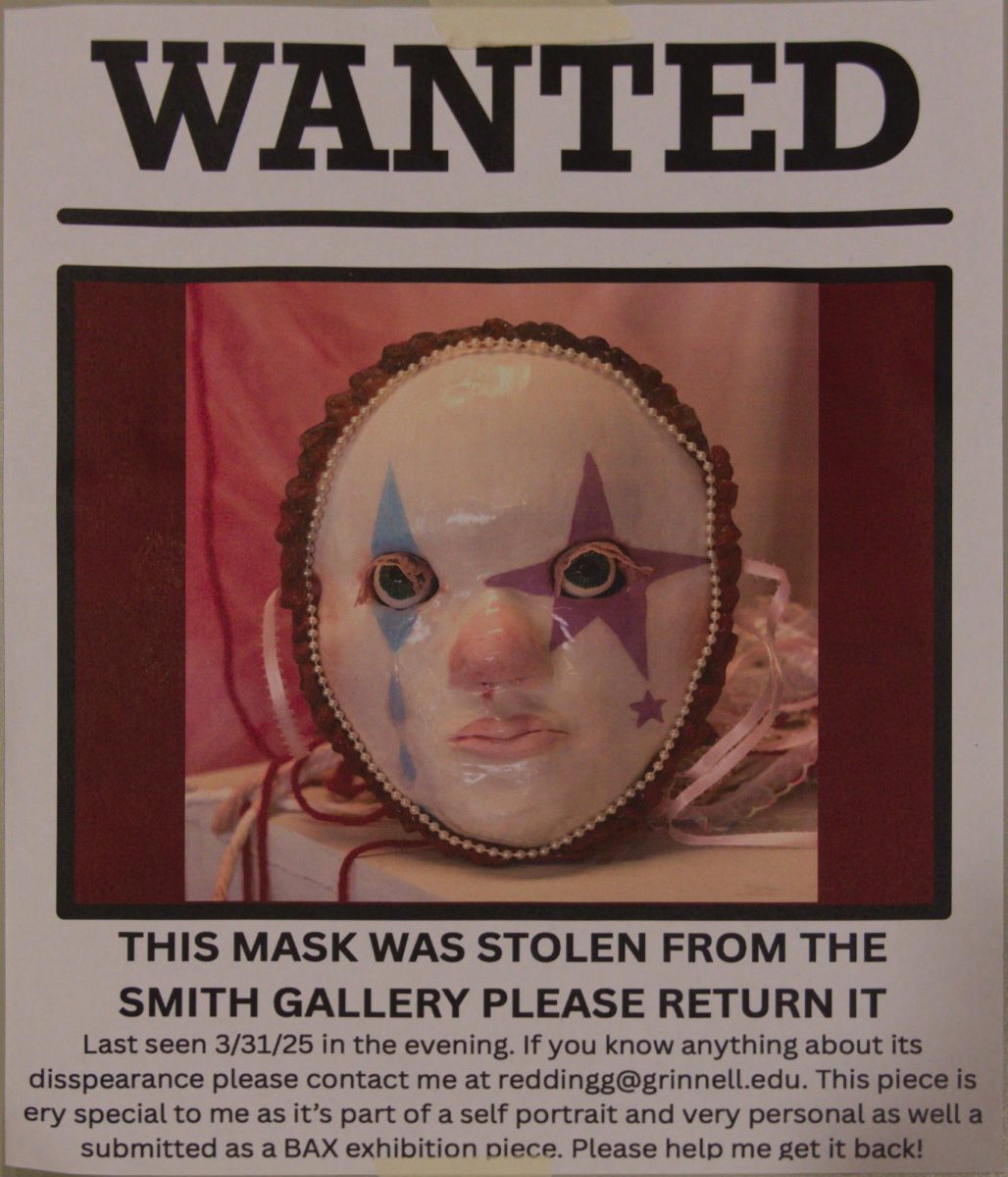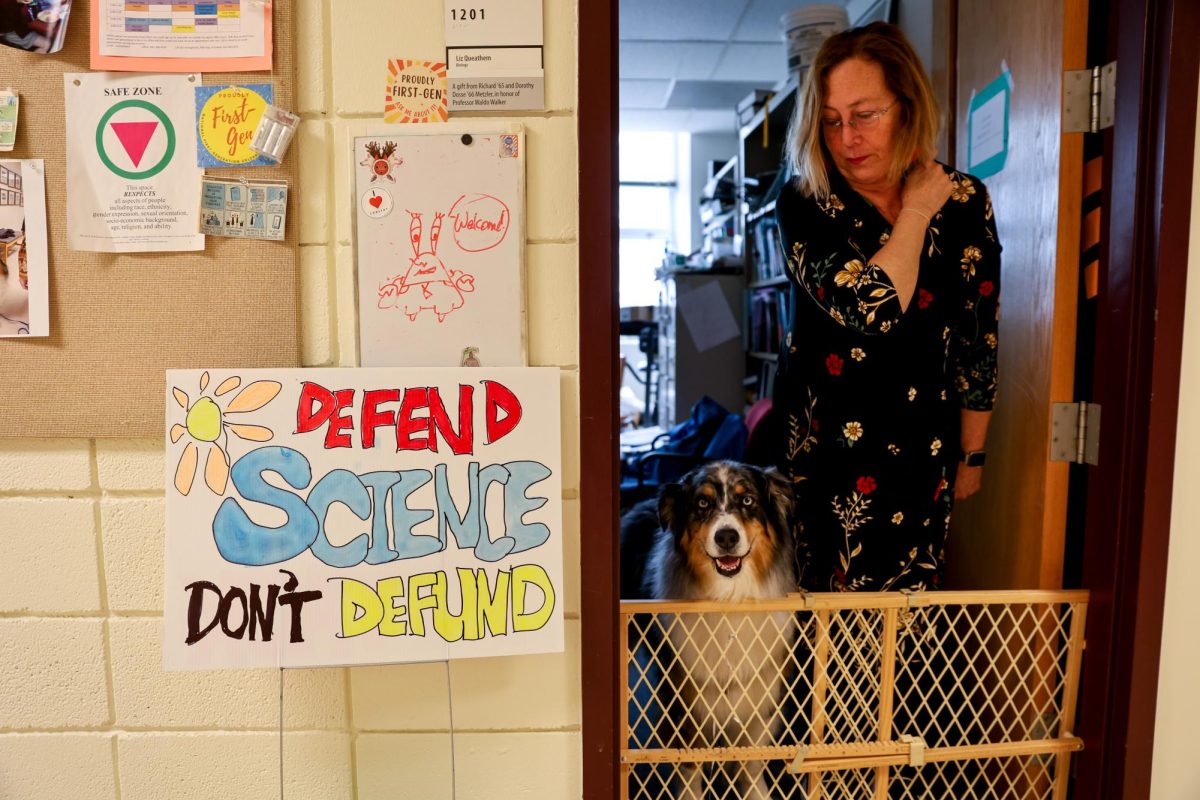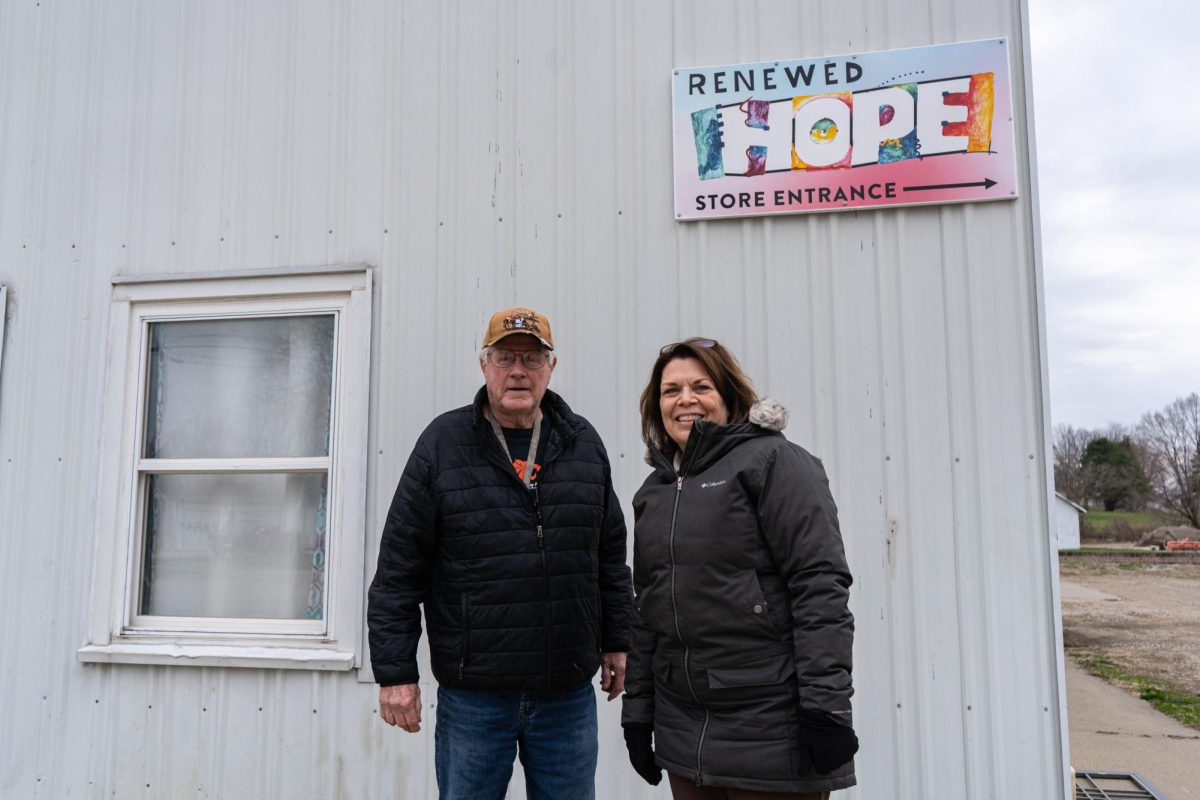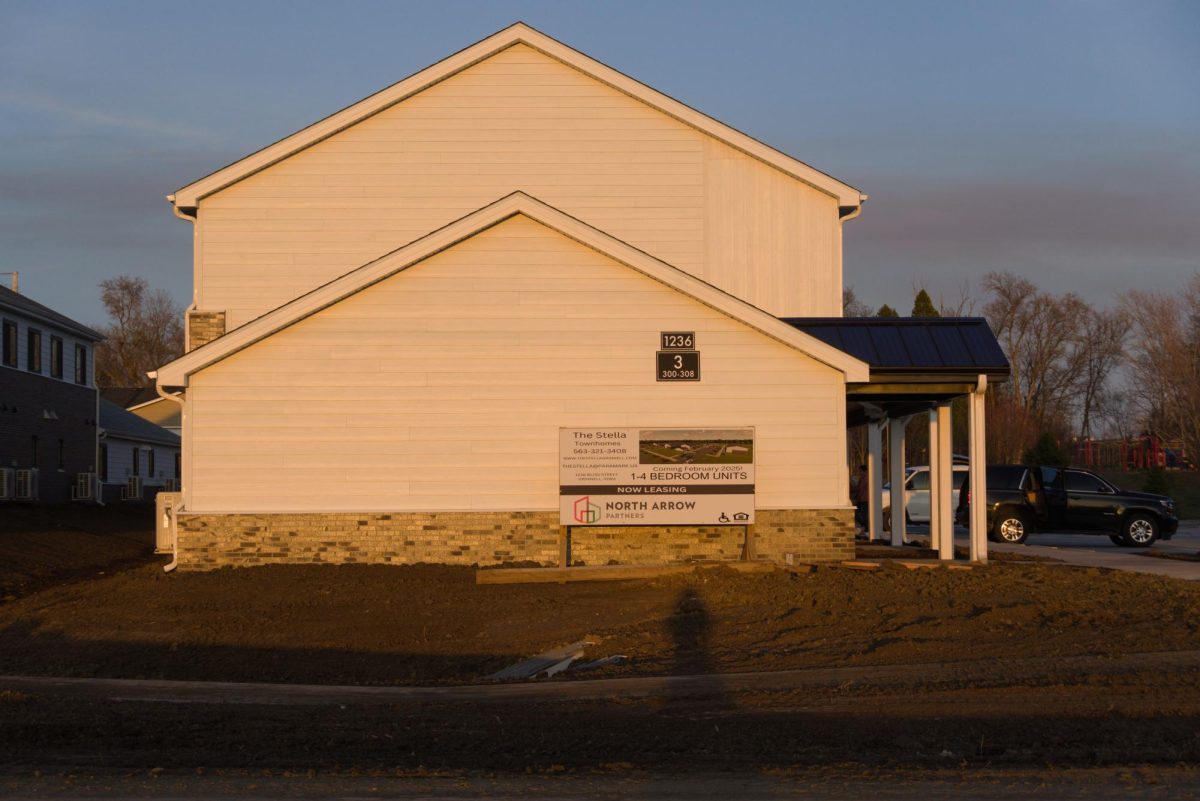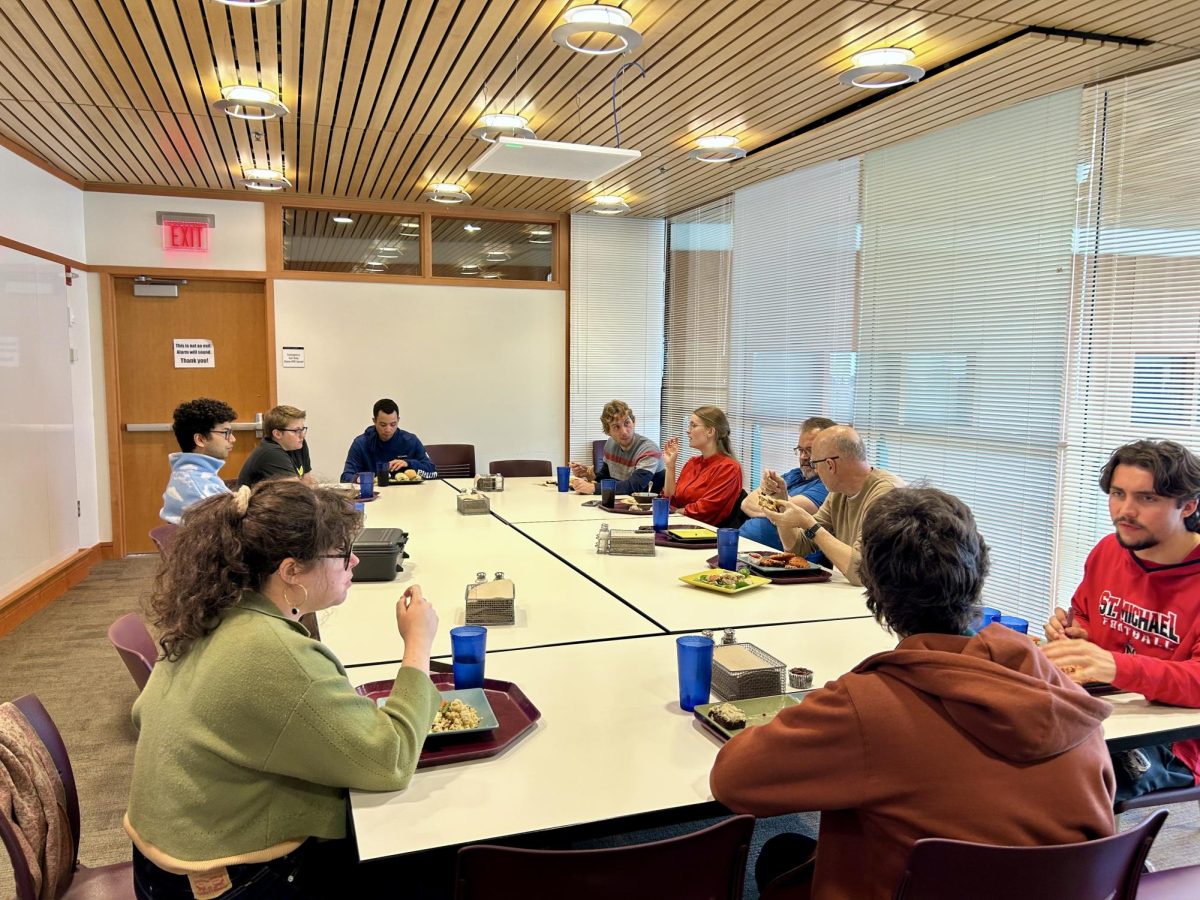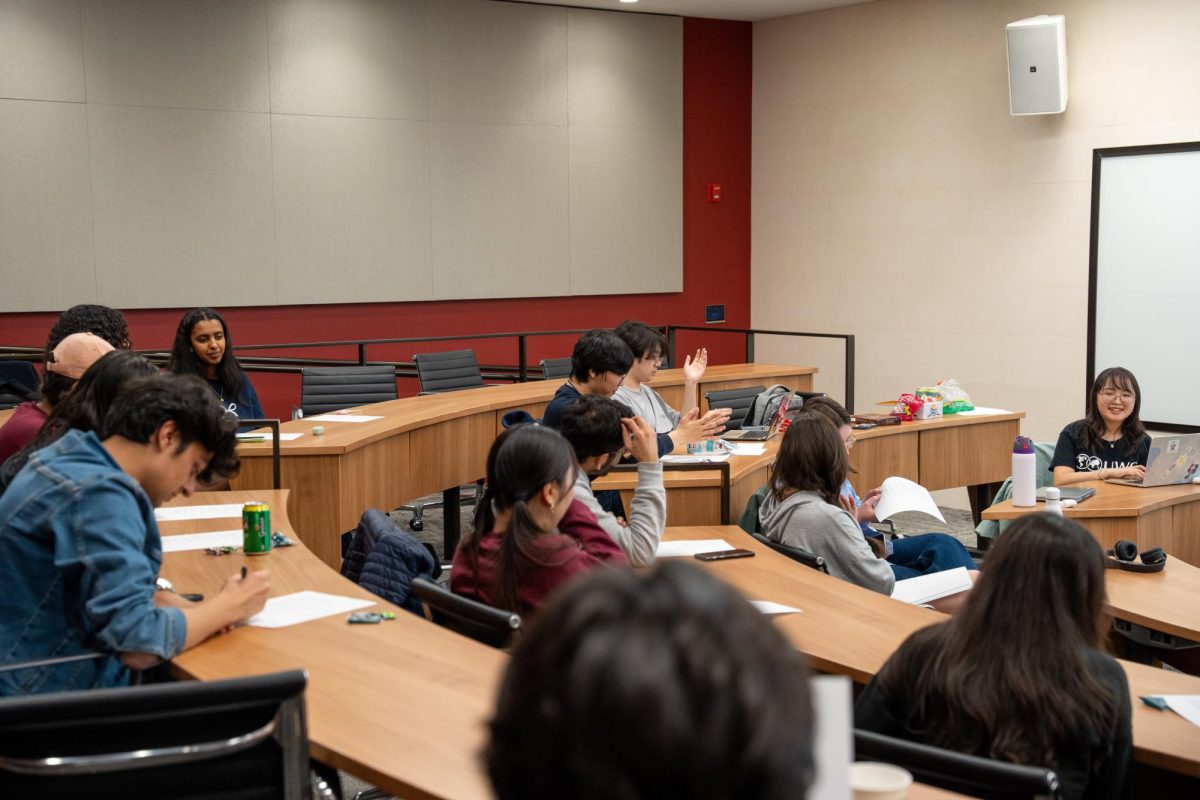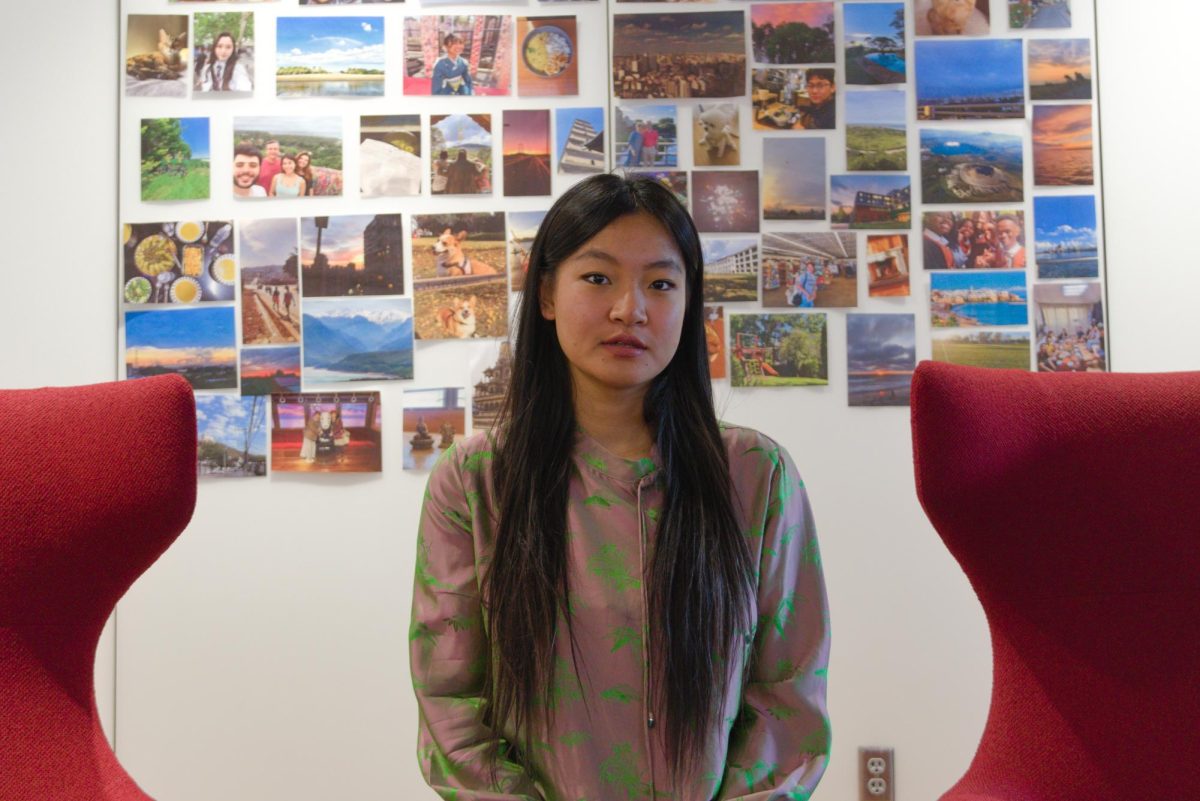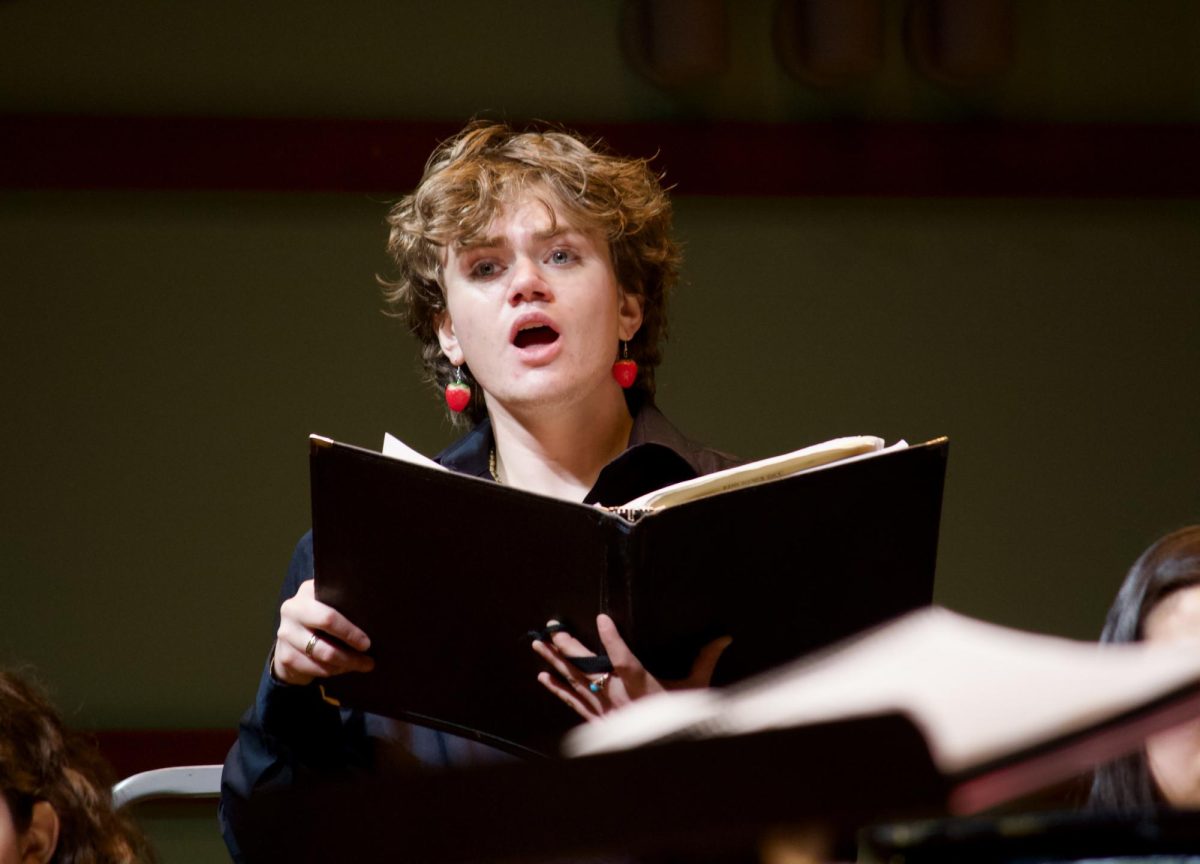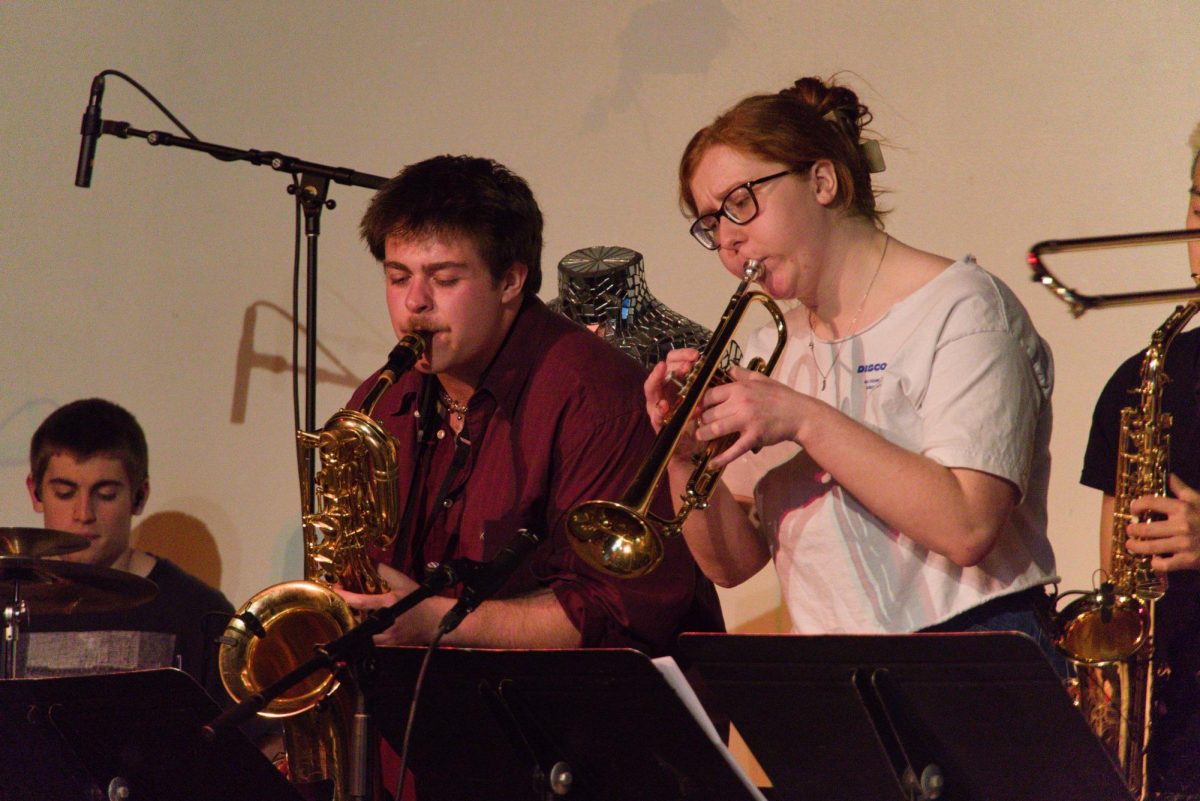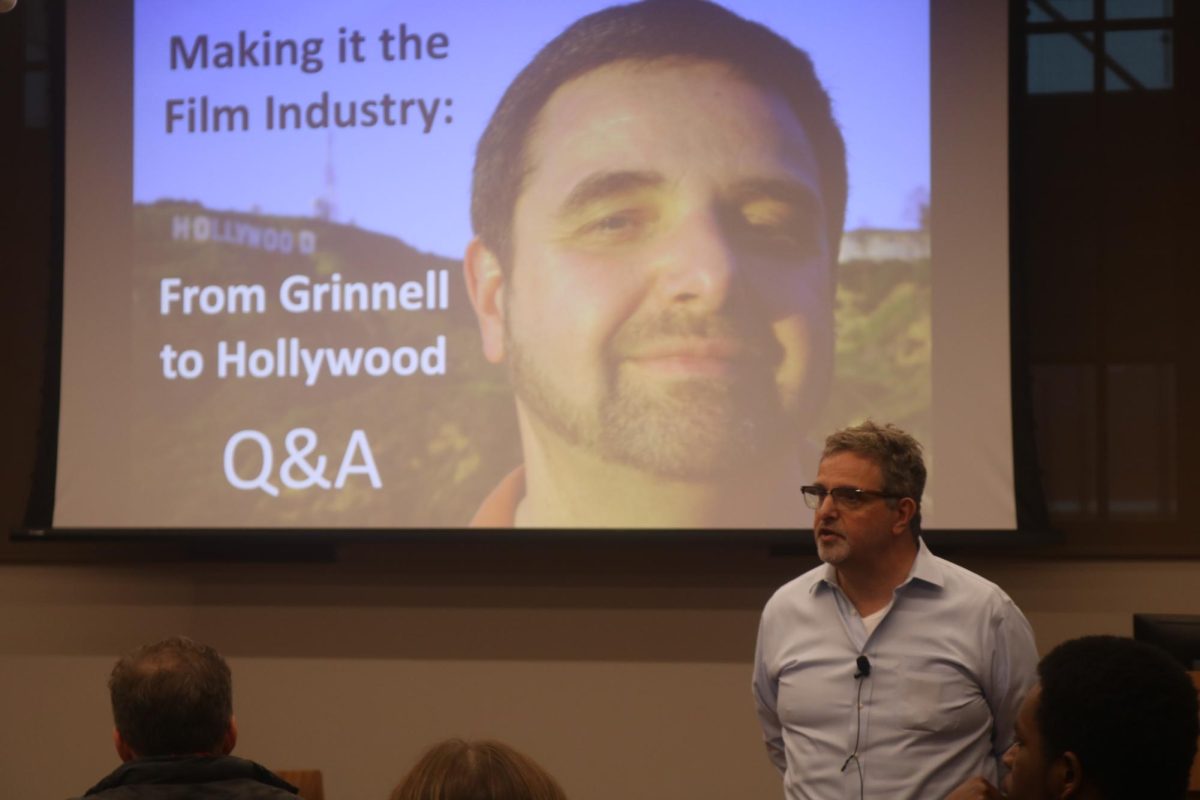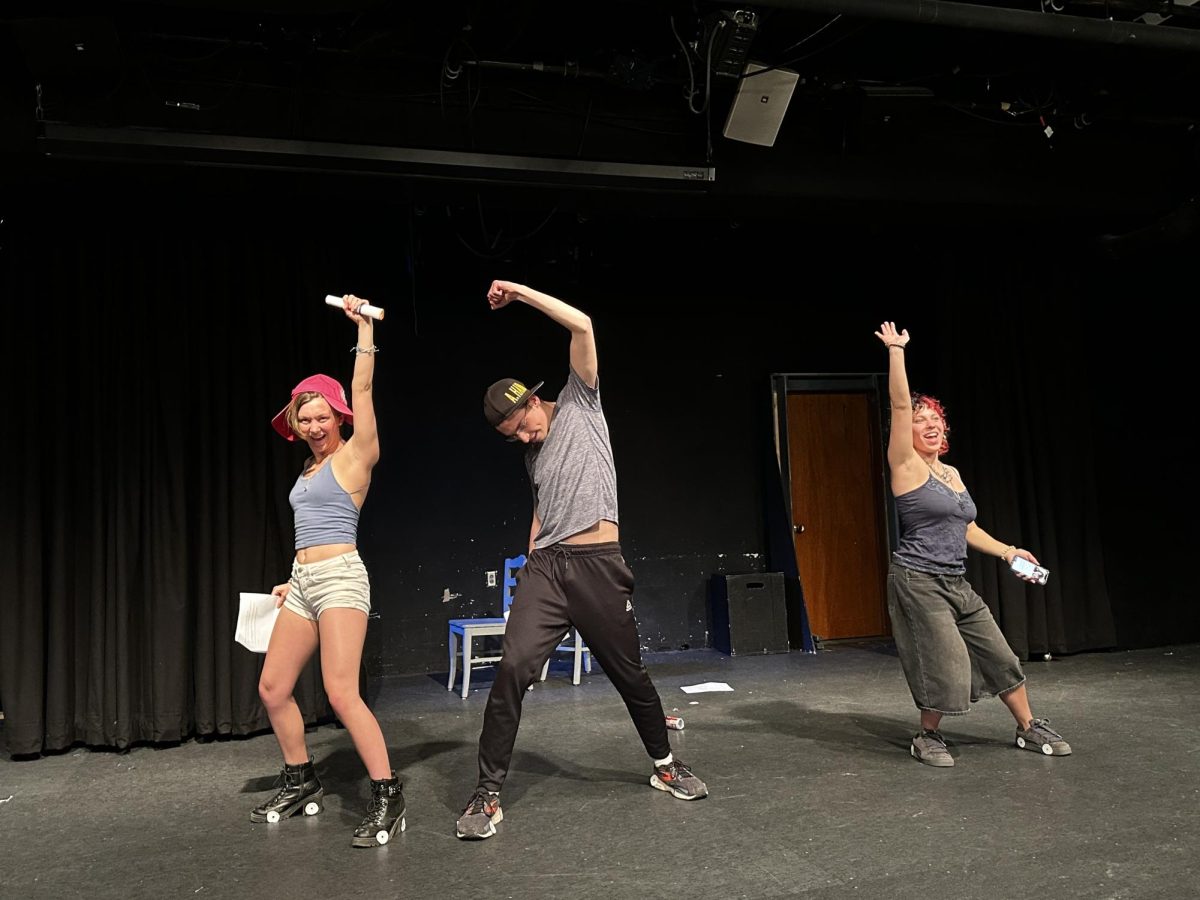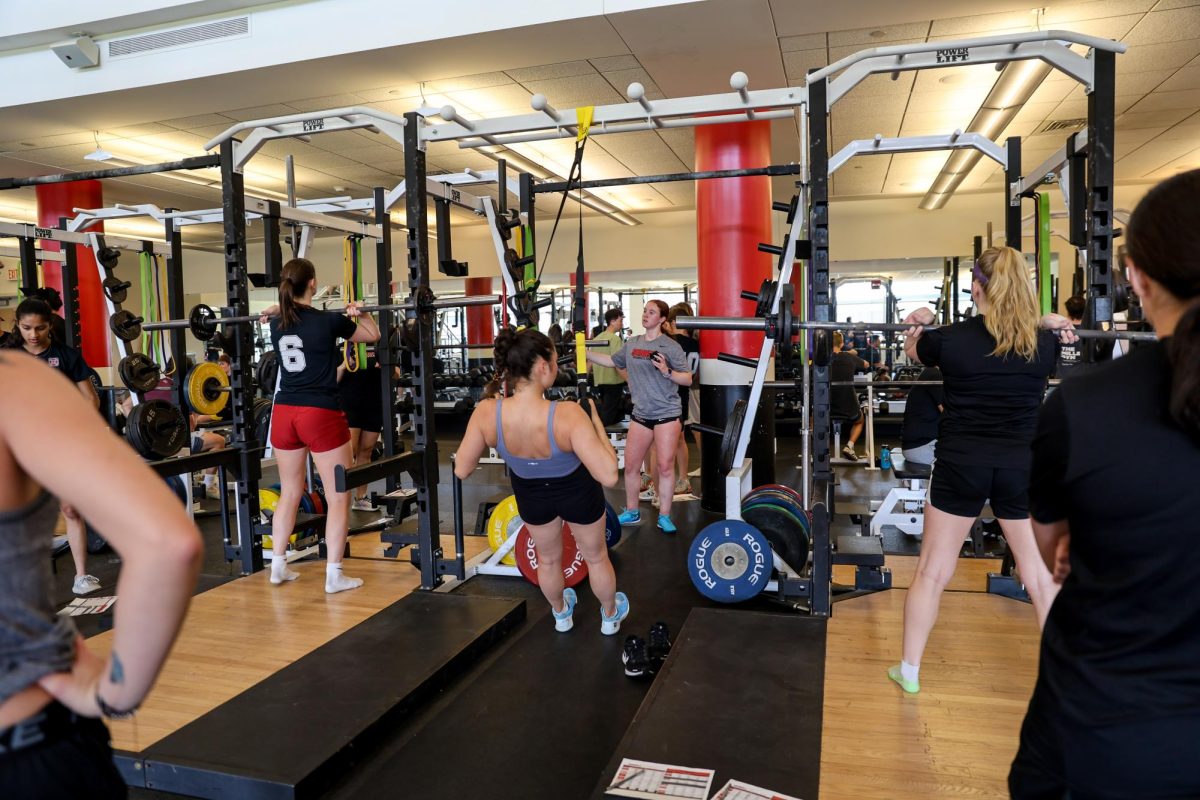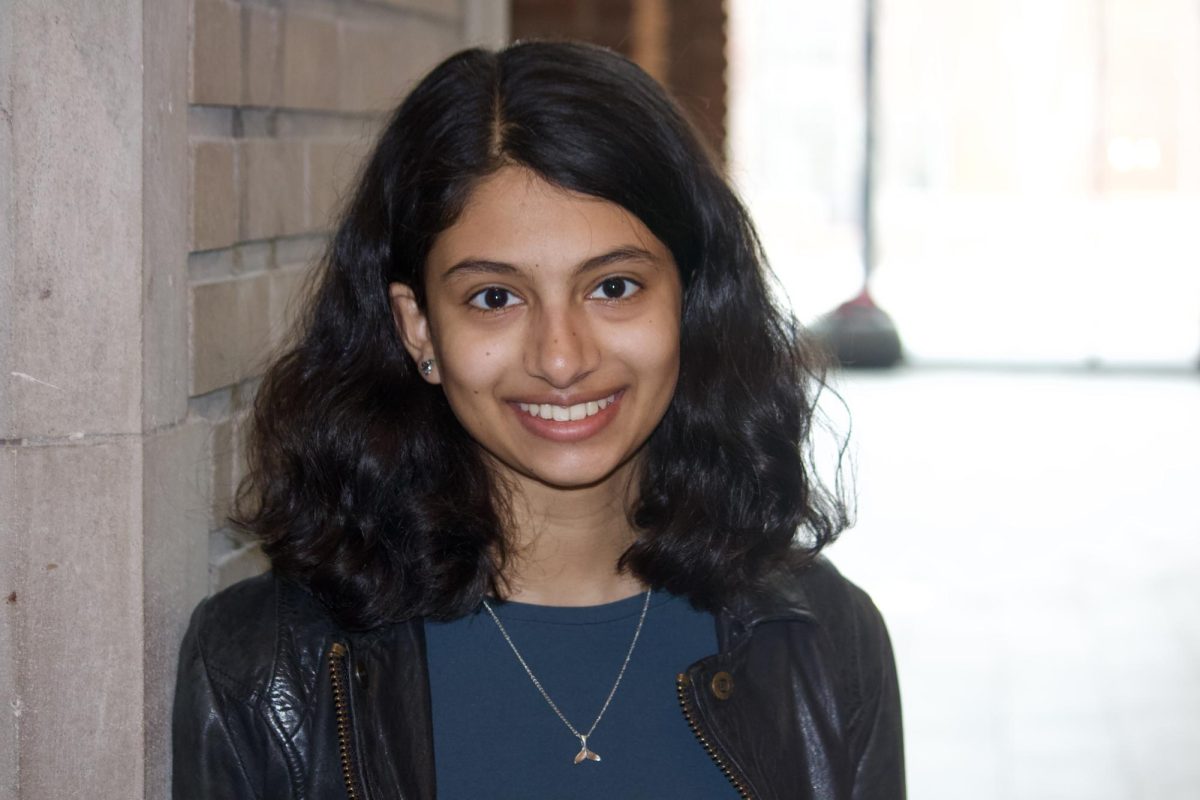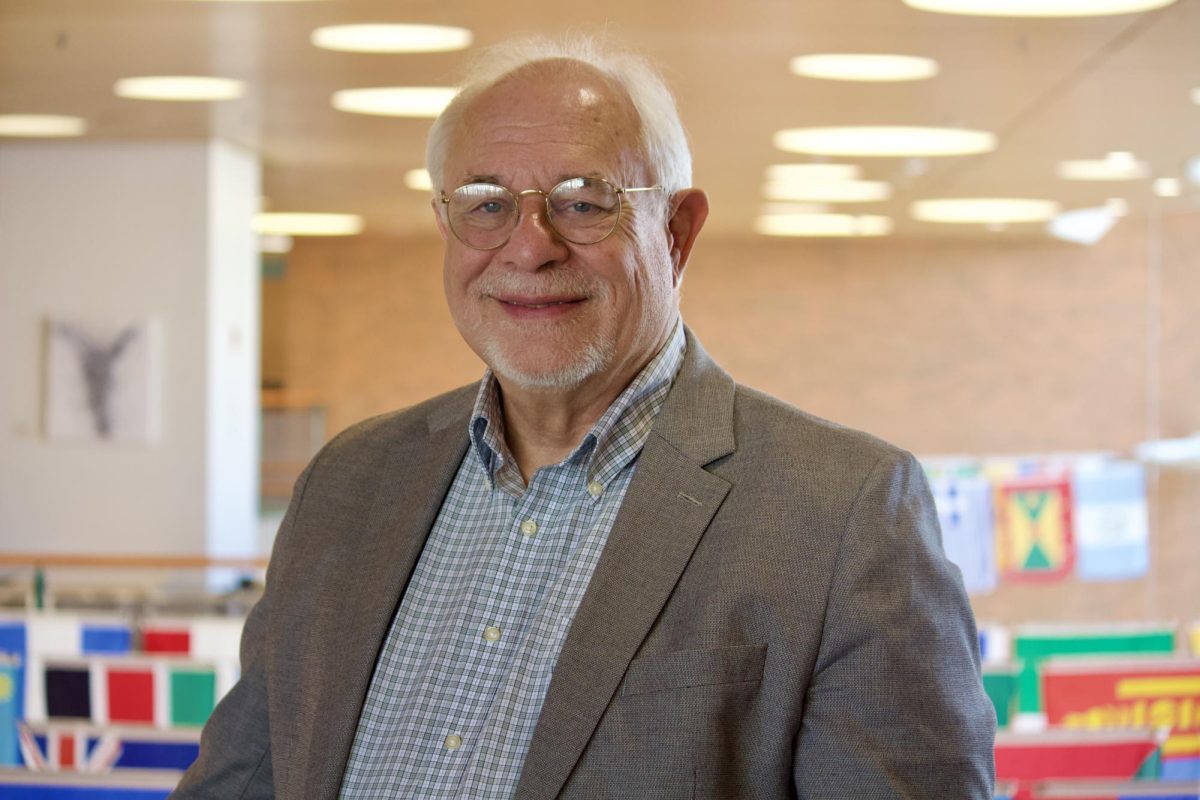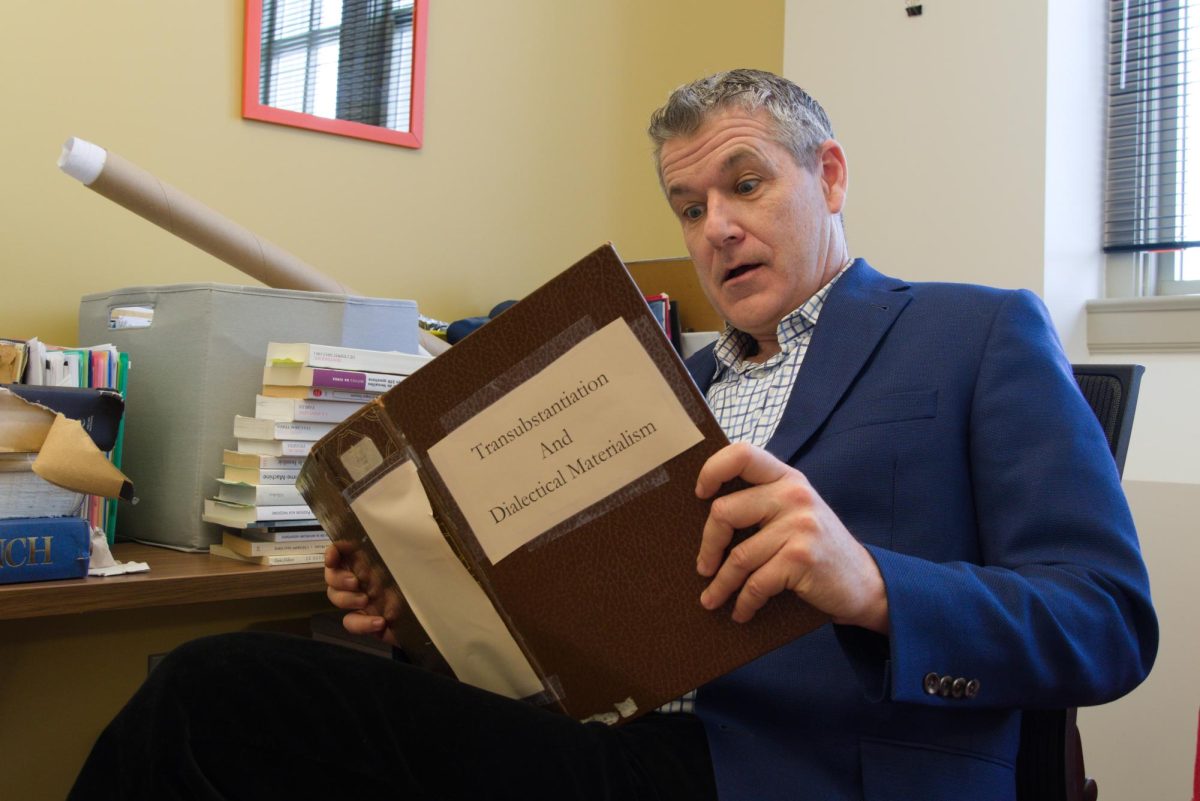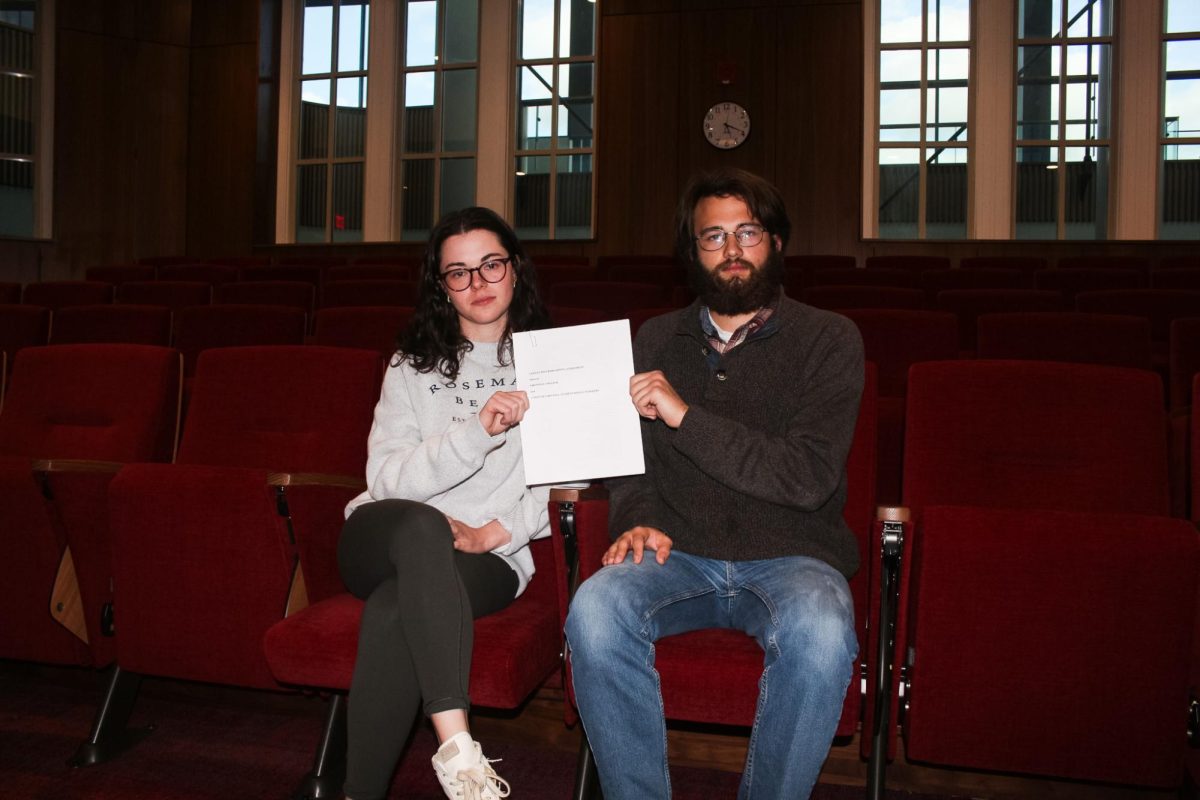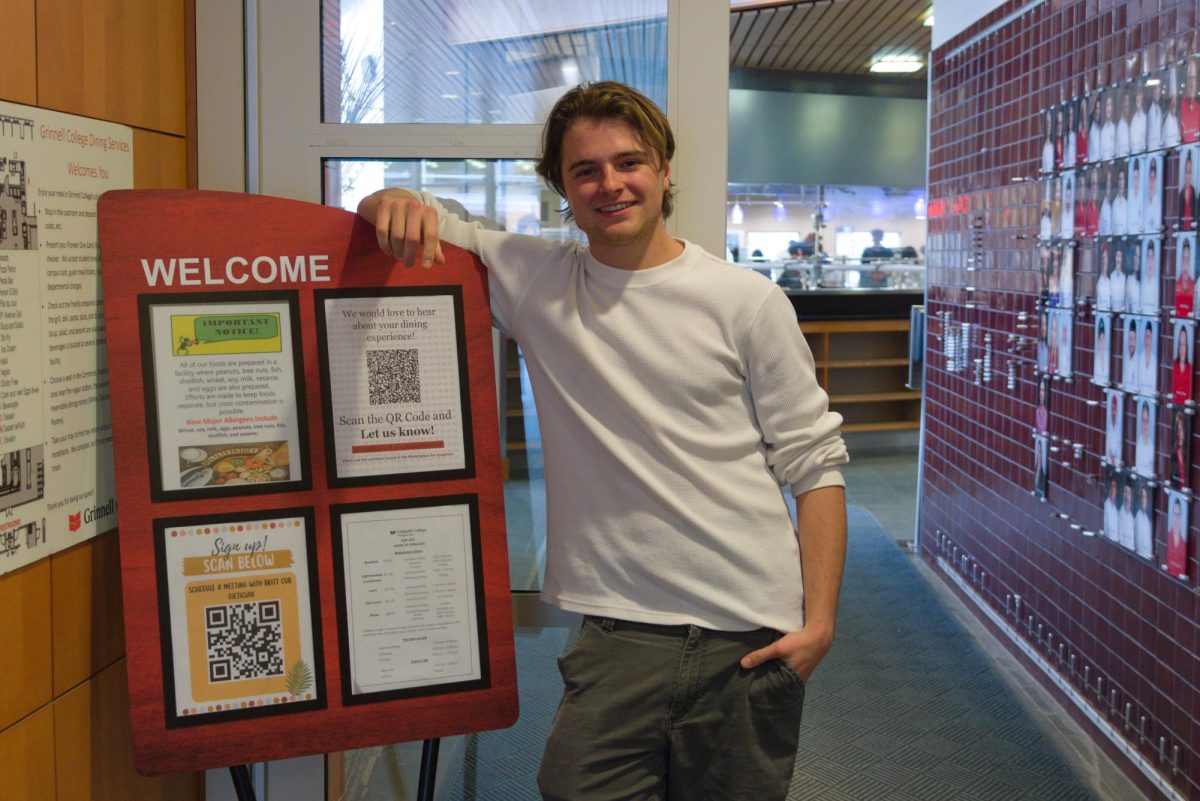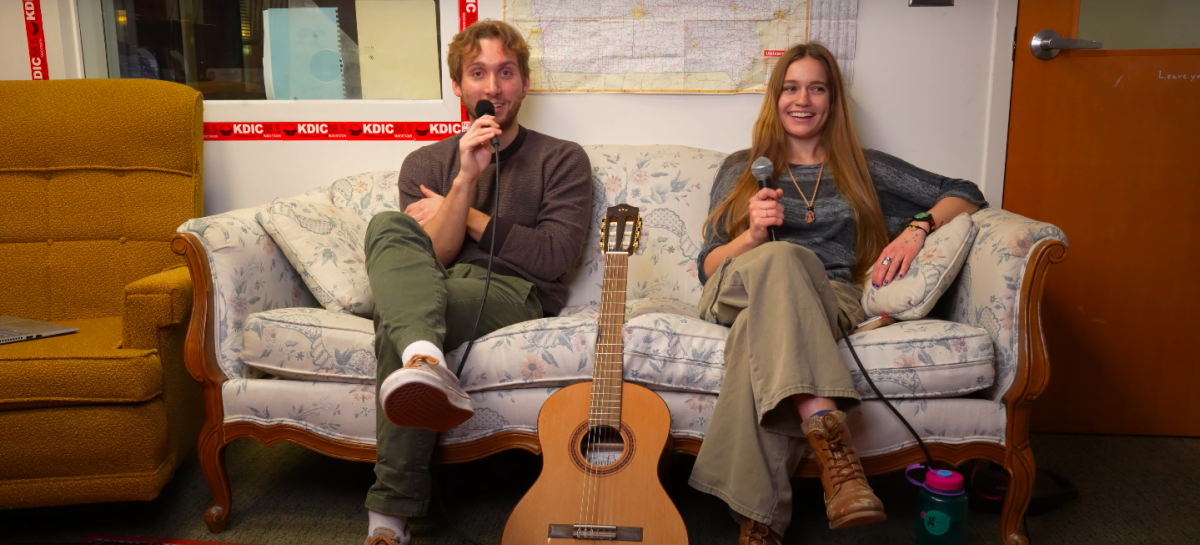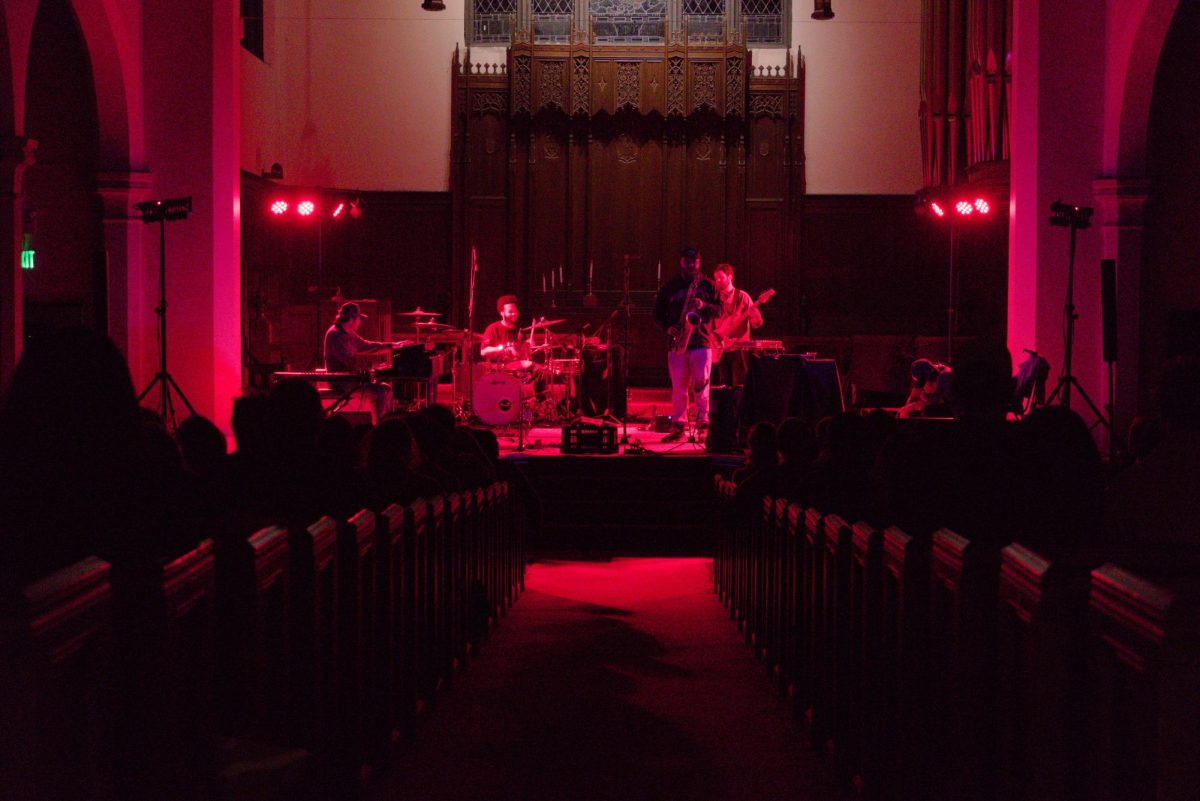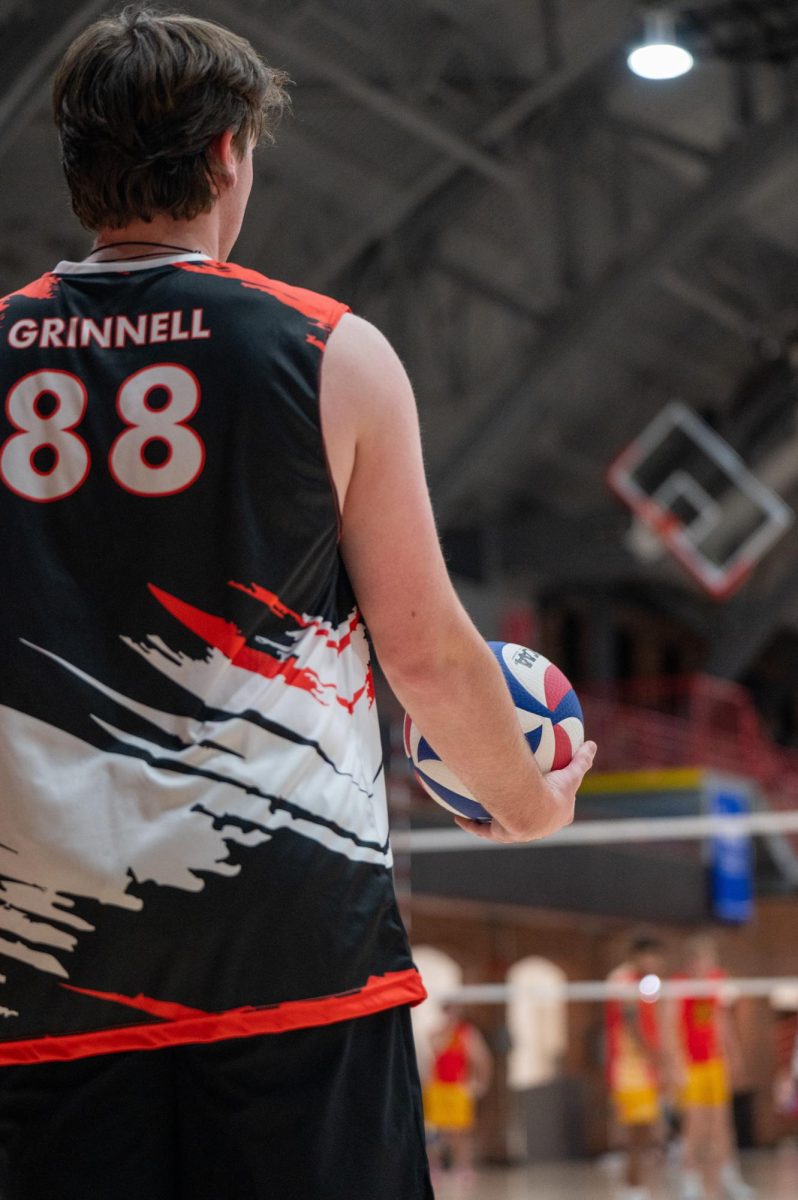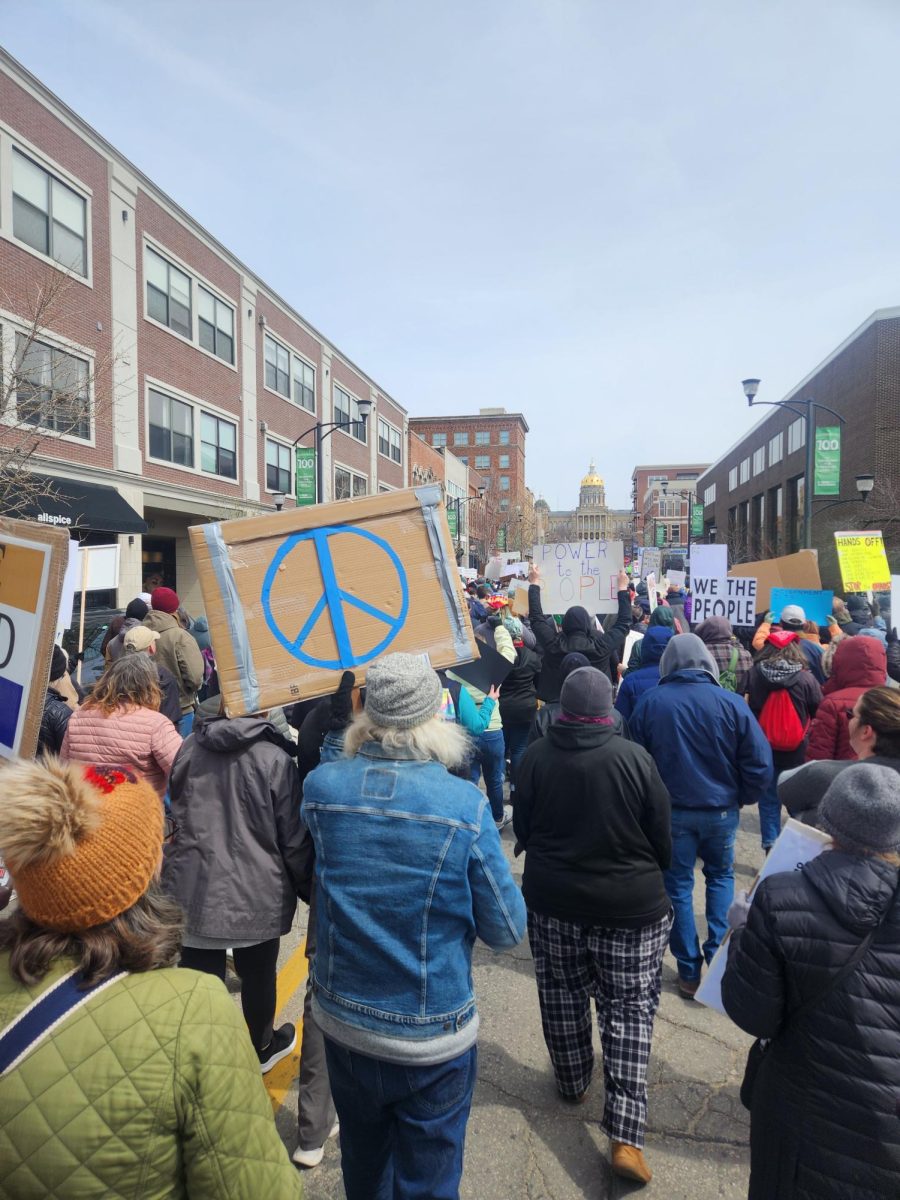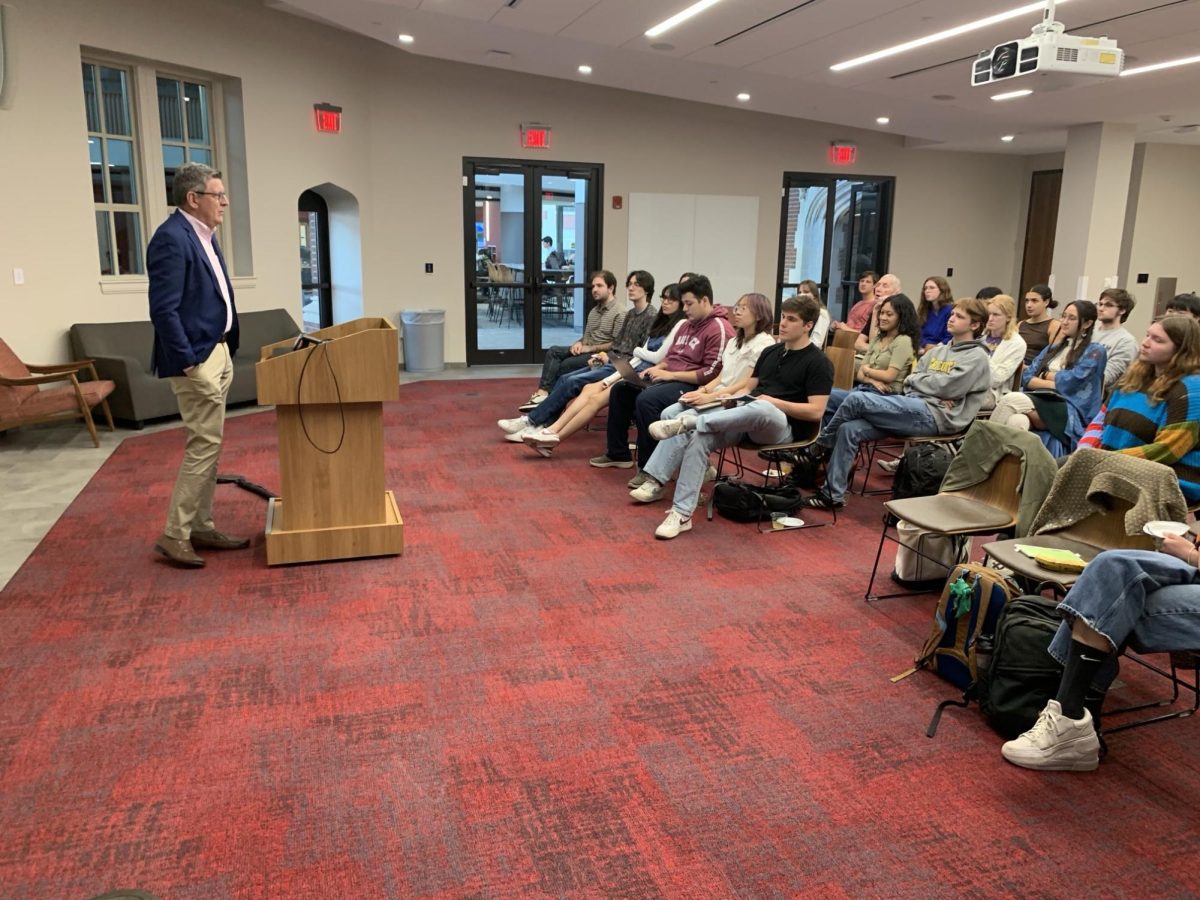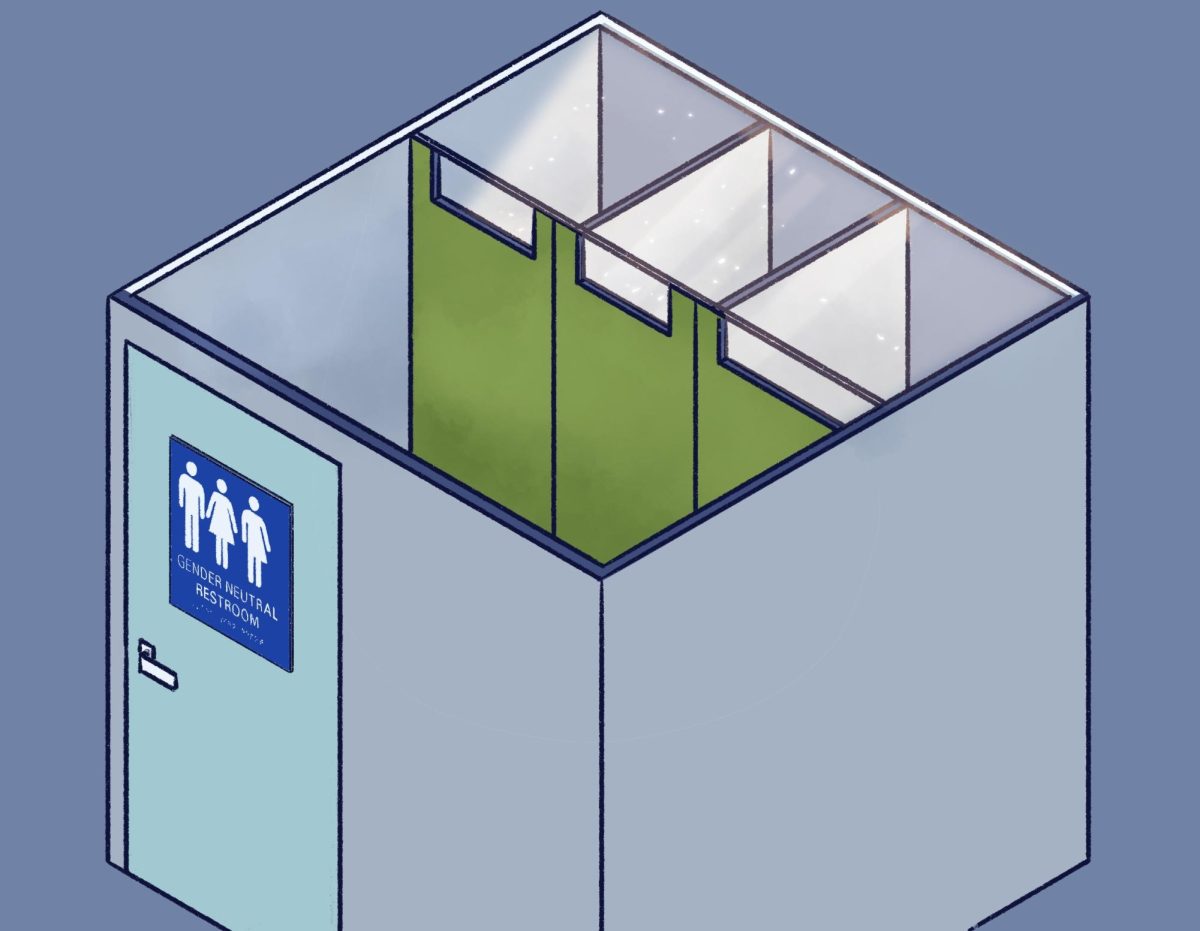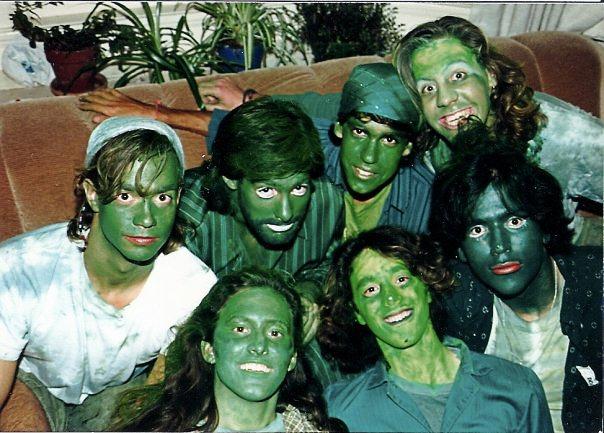
Grinnellians painted green for a party at “Green House.” Once converted to black and white for the
yearbook (bottom), the image could be mistaken for one of students engaging in blackface, which prompted The S&B investigation of the photograph.
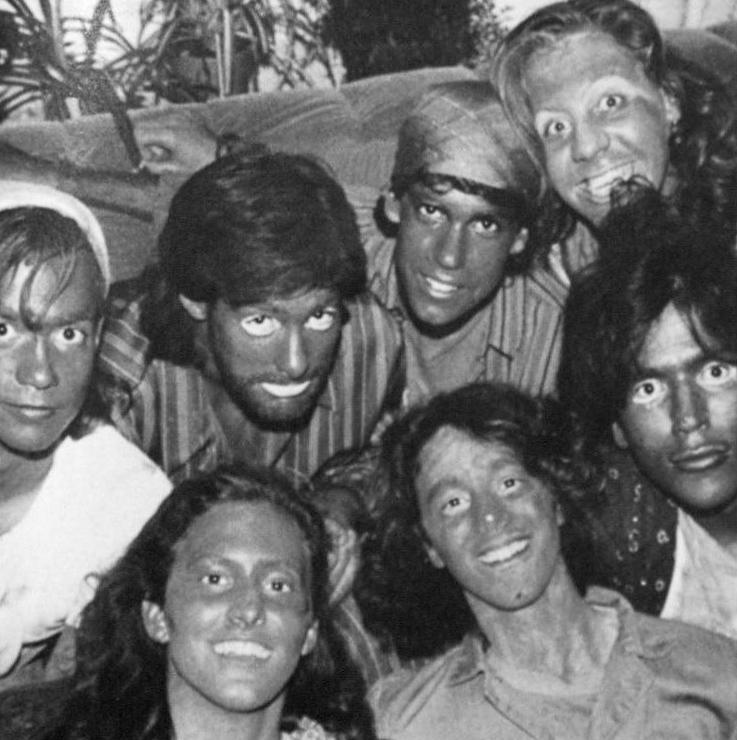
In 1990, Grinnell College student Guy Potter ’92 and his fellow residents of “Green House,” an environmental co-op house on East Street, dressed up for a party. They covered their bodies in green body paint and wore green clothing. They also took several photos to commemorate the event, which ended up in the 1992 Cyclone yearbook. In the pictures, the young Grinnellians mug for the camera with big smiles and long hair reflective of the early 90s.
However, the Cyclone was printed in black and white and, as a result, the “Green House” photo looks a lot like blackface.
“It had my friends in it … that’s the one I chose to submit to the yearbook,” said Potter, now a psychiatrist at Duke University. In an email to The S&B, Potter wrote, “I am profoundly sorry that the photo exists in the yearbook, regardless of context or intent, and I apologize to anyone who has seen it and been hurt by the perception that it represents blackface.”
“I had no thoughts when I submitted the photo of how it might appear post-production, and it would be right to assert that even this freedom from the need to recognize or foresee is a form of privilege that needs to change,” Potter wrote.
The photo recently garnered attention when Ellen McCally, a member of Green House, posted the photo in Everyday Class Notes, a Facebook page for Grinnell Alumni to share college memories.
Recently, yearbook photos of students in blackface have featured prominently in national news. First Ralph Northam, governor of Virginia, and then State Attorney General Mark Herring, also of Virginia, admitted to wearing blackface at college events. Following these admissions, many similar photos from various institutions’ yearbooks began surfacing in social and news media, and Grinnell College was no different.
One photo printed in the 1993 Cyclone depicts a Halloween party at the Harris Center, captioned “The Three ‘Bucks’: Buck Wheat, Buck Naked and Buck Rogers,” and shows a white student in blackface and overalls, likely impersonating Eddie Murphy’s “Saturday Night Live” caricature of the as-named character in the 1930s Little Rascals short films.
However, as has been seen in the past month, photos of this type may do harm to public figures’ reputations, but they have not caused a legitimate reckoning of the structural racism that persists in our country. Northam shows no sign of stepping down from his post as governor since his yearbook photo surfaced on the first day of February, Black History Month.
The publication of these photos in the ultimate form of institutional memorabilia clearly shows the form of insidious, passive racism that continues to exist.
The S&B reached out to the editors of the 1992 and 1993 yearbooks for comment, but has received no response as yet.
Jen Jacobsen ’95, director of wellness and prevention at the College, was a student at Grinnell at the time the “Three Bucks” photo was taken. Of the Facebook posts unearthing blackface in Cyclone yearbooks, she said, “Many of white students commenting on the photo seem to have realized that Grinnell was no better than anywhere else.”
Grinnell College prides itself on its strong commitment to social justice and inclusivity, but racism has always been an issue on campus.
“Because of the generosity of classmates and other alumni of color who commented on the thread, I think many of us white alumni have a newer realization about how many of our classmates of color felt ‘gaslighted’ about expressing concerns about racism while they were at Grinnell and how this event was only one very visible instance of daily racism they faced,” Jacobsen said.
College alumna Rhonda Stuart ’86 remembered a campus with 60 Black students out of 1,200 and an office of diversity that she characterized as “always in transition.”
“There was nobody to complain to when there were problems,” said Stuart. “I remember one of my professors would always come up to me and ask me where the other Black students were in class, like we all knew each other, and they didn’t seem to think anything was wrong with it. I knew people who graduated who couldn’t get any advisor to write them a recommendation, I know the Black English majors I knew felt like the department was openly hostile to them.”
Jacobsen, on changes in responses to bias-motivated incidents on campus, said that “not only does racism still exist on campus, but that our students of color feel it goes unseen by white students, staff, and faculty.” She said that she has seen a positive change in priorities of the college and staffing of our Chief Diversity Officer position since her time as a student at Grinnell.
Erik Henderson ’19 researched the history black student life at Grinnell as a part of his summer job at the College Library’s Archives and Special Collections. He said that while student life is portrayed differently in yearbooks than in other forms of institutional memorabilia, he doesn’t think that such a photo would appear in yearbooks today.
“Especially at Grinnell, I think we have a collective understanding that we’re at a certain point, and we don’t want people to be disrespected, and we have a collective mindset that we won’t tolerate that [blackface] here. Elsewhere in the country, you may come across that — not even may, you definitely will come across that.”
Henderson said that the Black Cultural Center archives contain Concerned Black Student (CBS) yearbooks, which contain records of activities of the organization and its members throughout the years — a different institutional memory.
